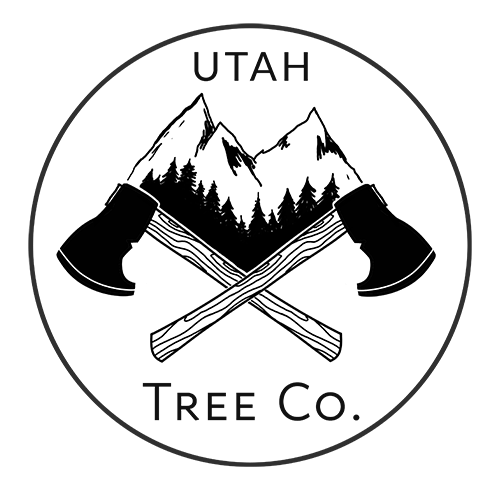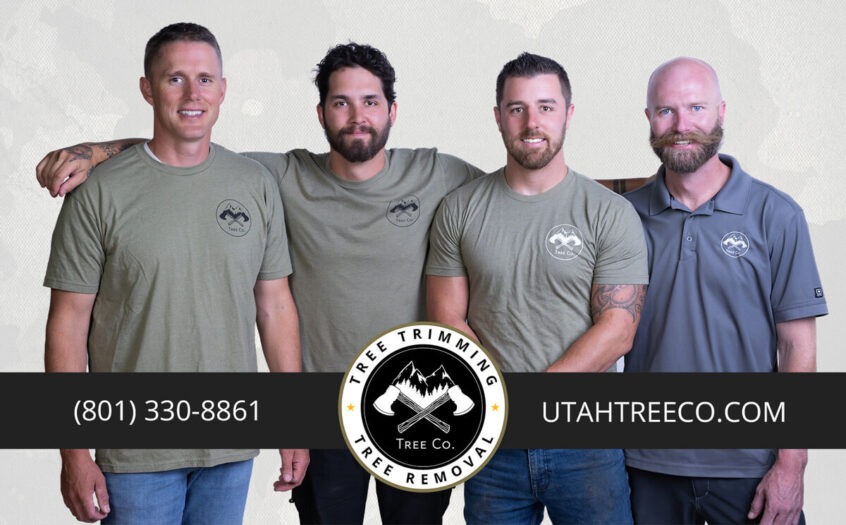Everyone loves having trees around their house. Trees are a natural resource that adds beauty to your lawn and provides shade, fresh air, and a cool breeze in hot Utah summers. Trees in your backyard can also help you reduce your energy bills. Research shows that only 17% shade over your house during the day translates to a savings of 10 dollars a month on your power bill.
While all this sounds great, not all trees are safe to be around your house. Like all living organisms, trees have a finite lifespan. They also get damaged. Keeping an ailing or damaged tree standing near your house is a huge safety risk. It can damage your vehicles and property. It may even fall on someone (a pet or person), causing serious injuries. That’s when you have to call a professional tree removal service company.
6 Signs When Your Tree Needs to be Cut Down
But before you do that, let’s understand the telltale signs the tree in your backyard needs to be cut down.
1. Damage and Decay
When a tree gets damaged or starts decaying, you must call a tree removal expert. As the tree starts decomposing or gets damaged, its structural integrity also begins to collapse. So, keeping it standing right next to your garage or driveway can prove disastrous, especially in windy conditions. Gushing winds can ring down the tree, injuring someone in its path.
Check your tree for:
- Excessive bark peeling
- Vertical cracks in the tree trunk
- Visible cavities
- Deep wounds
- Badly damaged truck
- Dead branches
If you see the above signs of decay and damage, call a Utah tree removal expert straightaway. Remember, tree felling is risky, so hiring a professional would always be better.
2. Dead Branches
Dead branches are also a reason your tree may need to go. More often than not, factors like disease, pests, or other stressors result in dead branches. However, you will see a dead branch or two occasionally. This should not be a concern as pruning can help. Call a tree trimming and pruning service provider right away.
But if you see dead branches all over the tree, it means your tree is dying. You can call an expert to understand the problem and address it if possible. But the last resort is to remove the tree before it becomes a safety hazard.
It’s fairly easy to identify dead branches. Usually, these branches show no signs of life. Dead branches have a frail and decaying bark. They have no foliage and buds during the growing season. Dead branches also lack flexibility and snap easily. If you see such signs, ask a Utah tree removal team to have a look. They can tell you what to do next.
3. Hollow Tree Trunk
A hollow tree trunk is not a good sign. It strongly indicates that the tree trunk is developing internal decay. As the decomposition continues, the trunk will grow weaker, causing the tree to collapse one day. This poses a grave safety hazard to you and your loved ones.
It’s not easy to identify a hollow trunk as it may not always be visible. Try tapping on the tree trunk a few times. If you hear a deep and hollow sound, it’s likely have developed a cavity inside. However, you should call a tree trimming and removal expert to be sure. They can tell you if your tree is healthy enough to stay or needs to be chopped down.
4. Dead and Dying Tree
A dead or dying tree is a safety hazard, not to mention an eyesore. Dead trees are also a breeding ground for many pests and insects. Moreover, the falling dead branches can cause injuries to people and pets and significant property damage. You should have a tree care services provider remove it as soon as possible.
The tree scratch test is the easiest way to determine whether or not your tree is dead. Scratch the tree enough to expose the inner layer. Unlike a live and healthy tree, a dead one will show a brown and dry inner layer called cambium. But make sure to scratch the tree in different areas.
Scratching just one branch isn’t enough as the branch may be dead, but the rest of the tree could still be alive. In such a case, a simple tree trimming and pruning job will do. You can save the tree but reduce the safety hazard caused by a dead branch.
A dead tree will also how the following sings.
- Brown and brittle bark or cracks
- Few or virtually no healthy leaves
- An excessive amount of dead wood
- Lots of critters and fungus
- Visible root damage
- Gradually starts leaning on one side
5. Insect Damage
Although insect infestations won’t always kill your tree, they will surely turn it into a safety hazard. While some insects may cause damage to only dying trees, others will attack healthy living trees. The type and extent of infestation will determine whether or not you need to remove the tree. That’s why calling a residential and commercial tree services expert is an excellent idea.
But before calling them, you can check your tree for the following signs.
- Thinning leaves and/or needles
- Exit holes (usually round or D-shaped)
- Discoloration of needles or leaves
- Visible insects and larva on the tree trunk, branches, and leaves
- Stunted branch growth
- Loose bark on the trunk
- Lifting and wilting roots
- Extensive defoliation or leaf damage
6. Root Rot
Root rot is a result of infection, which may not always be beyond recovery. You can call an arborist or tree care services company to have a look. Depending on the situation, they may recommend an aggressive treatment to help your tree recover fully.
Pruning the infected roots can help. Sometimes, chemicals like chloropicrin or methyl bromide can help reduce the infection. If these remedies fail, the experts will recommend removing the tree as it will pose a safety risk.
Root rot often shows the following symptoms.
- Gradual or quick decline in growth
- Stunted or poor growth of roots
- Small and pale leaves
- Some species may show wilted, yellowed, or even browned leaves
- Dead branches
- Gradually thinning canopy
In Conclusion
Well-trimmed healthy trees can boost the look and value of your property. Lush green trees also provide plenty of shed and cold breeze in hot Utah summers. However, make sure every tree planted around your house is growing safely. Unhealthy and invasively growing trees can be a substantial safety hazard.
With these signs, you can determine whether or not a tree poses a safety risk. These tips will help you take the necessary steps to remove a hazardous tree as soon as possible. But it’s always better to consult a professional before cutting down nature’s best gifts.
For professional tree care services, look no further than Utah Tree Co. – your trusted tree removal company in Utah. Call (801) 386-2405 or fill out our online form today!

